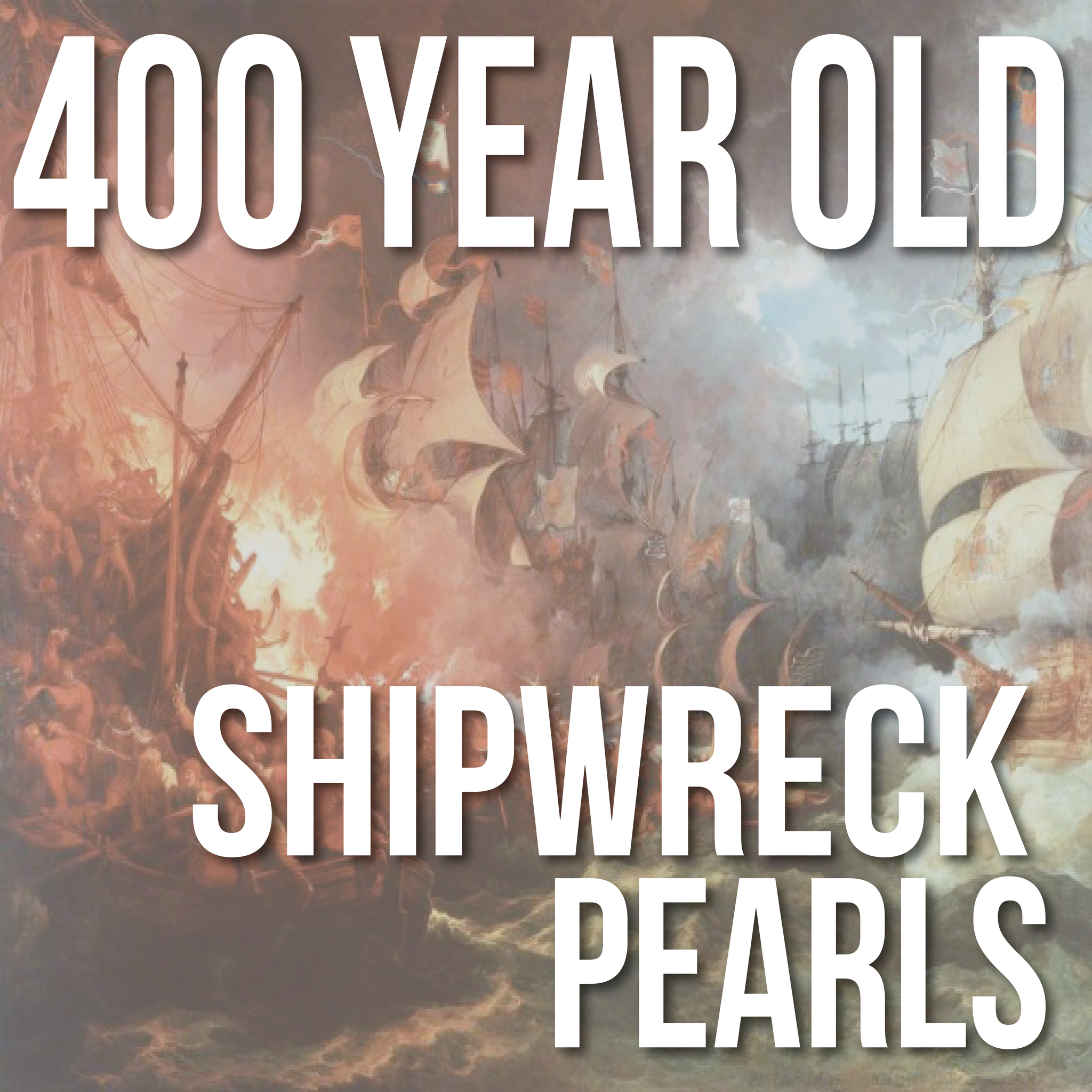400 Year Old Shipwreck Pearls?
Yeah you heard us right. 400 year old pearls. How can something so soft, so fragile be in one piece after so long?

Shipwrecks. For thousands of years we have been using ships to explore, trade, and settle across the globe. Unfortunately, mother nature strikes unpredictably, mistakes happen, and thousands upon thousands of ships lay on the ocean floor, most containing secrets and pieces of history that would hopefully be salvaged one day, giving us another small yet important chapter in the history of mankind. This perticular piece of history is the tale is of the Santa Margarita of the 1622 fleet.

Let’s take it back to the discovery of the New World or, as I like to say the discovery of new money. All the explorers were funded because, essentially, the monarchies wanted exposure to new riches. Well, riches are exactly what was found on Margarita Island when Christopher Columbus arrived in 1498. The coast of the island was abundant in pearls. The Pinctada Imbricata was an abundant mollusk. Although tiny, this mollusk produced gorgeous natural pearls. Over the years, pearl diving was active and the pearl treasures were loaded up on ships and sent right back to the Spanish Crown. Remember, at the time, pearls were highly valued throughout Europe and these were important discoveries. And then there were the gold and emeralds from Columbia, and silver from Peru and Mexico. All riches for the Spanish kings.

By the early 1600s the royal coffers were depleted and creditors were calling so Spain was anxious for their newest fleet of treasures to make their way back from the New World. In fact, at this time, Spain’s world dominance depended solely on the wealth from the Indies. So, thankfully, the Spanish fleet of 28 ships were on their way back to Spain. One ship in the fleet, the Santa Margarita was loaded with treasures including silver coins, silver ingots and bars and discs of gold. All treasure was subject to a 20% tax by the Spanish king so there was also some unregistered contraband on board too. Another famous ship in the fleet was the Nuestra Señora de Atocha which carried gold and silver along with copper, gems, jewels and indigo from Spanish ports. The ships left Cuba on September 4, 1622 and within days they were caught in a storm. The Santa Margarita, the Nuestra Señora de Atocha and four other ships sunk about 20-30 miles west of Key West, Florida. And all of the treasures were lost along with the lives of 550 passengers and crew.

An effort to recover the treasure was launched almost immediately by a politician in Havana, Francisco Melian. Melian secured salvage contracts and by 1626 he located the sunken Santa Margarita. He was never able to locate the Nuestra Señora de Atocha.( As a side note, the Antocha’s main treasures were eventually discovered in 1985, after a 16 year search.) Melian discovered the Santa Margarita but had a difficult time salvaging the treasure. He did do two things, though, he brought over pearl divers from Isla Margarita to help in his search. He also brought in a diving bell to search for the treasure. He had some limited success but eventually had to give up his search efforts due to weather patterns and shifting sands. And the years rolled by.

It took until 1980 for a treasure hunting group to come forward and search for the Santa Margarita. It took years and many experts and equipment to locate the sunken ship again. But the hard work paid off. Among the many treasures littering the sea floor, the Santa Margarita contained an undocumented lead box containing 16,184 natural pearls. They were discovered in 2008. These extremely rare and valuable pearls are thought to originate from the coast of Margarita, a Venezuelan island known for its gorgeous pearls.

